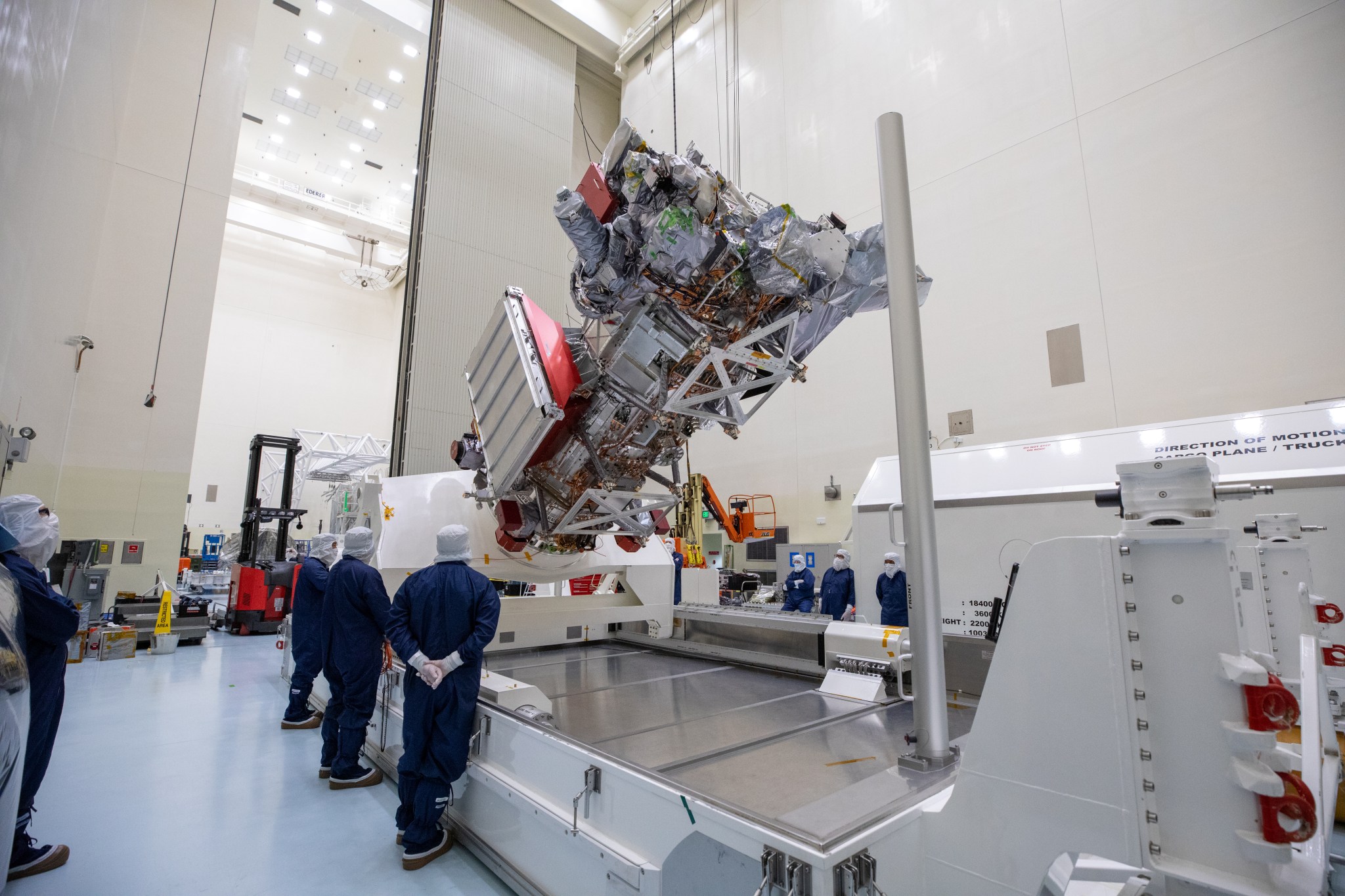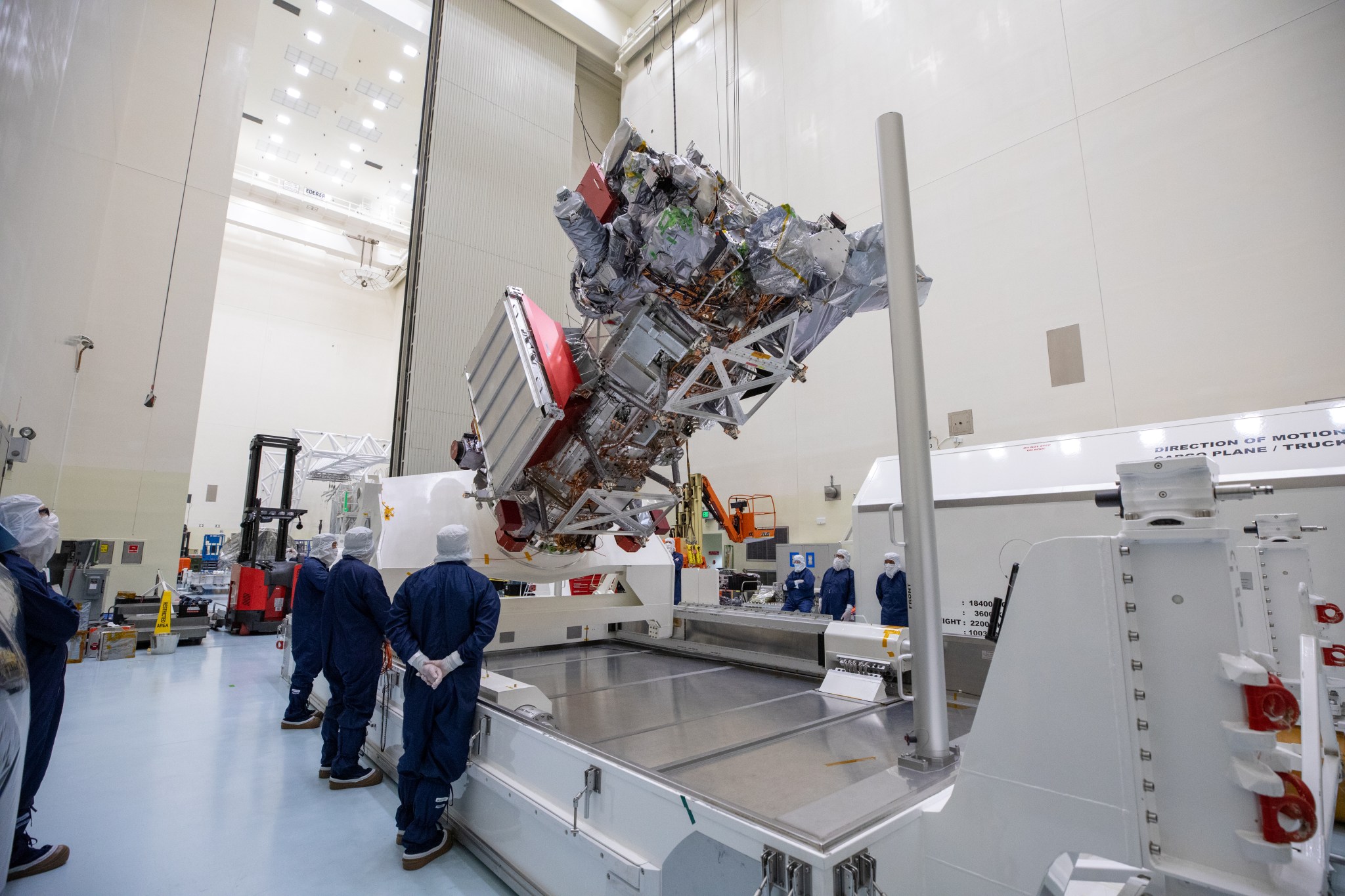
Crews rotated to vertical then lifted NASA’s Europa Clipper spacecraft from its protective shipping container after it arrived at the Payload Hazardous Servicing Facility (PHSF) at the agency’s Kennedy Space Center in Florida on May 28.
The spacecraft, which will collect data to help scientists determine if Jupiter’s icy moon Europa could support life, arrived in a United States Air Force C-17 Globemaster III cargo plane at Kennedy’s Launch and Landing Facility on May 23. The hardware traveled more than 2,500 miles from NASA’s Jet Propulsion Lab in Southern California where it was assembled. The team transported Europa Clipper to the PHSF and will perform a number of activities to prepare it for launch, including attaching the high gain antenna, affixing solar arrays to power the spacecraft, and loading propellants that will help guide the spacecraft to its destination.
On board are nine science instruments to gather detailed measurements while Europa Clipper performs approximately 50 close flybys of the Jovian moon. Research suggests an ocean twice the volume of all the Earth’s oceans exists under Europa’s icy crust.
The Europa Clipper spacecraft will launch on a SpaceX Falcon Heavy rocket from NASA Kennedy’s Launch Complex 39A. The launch period opens Thursday, Oct. 10.



